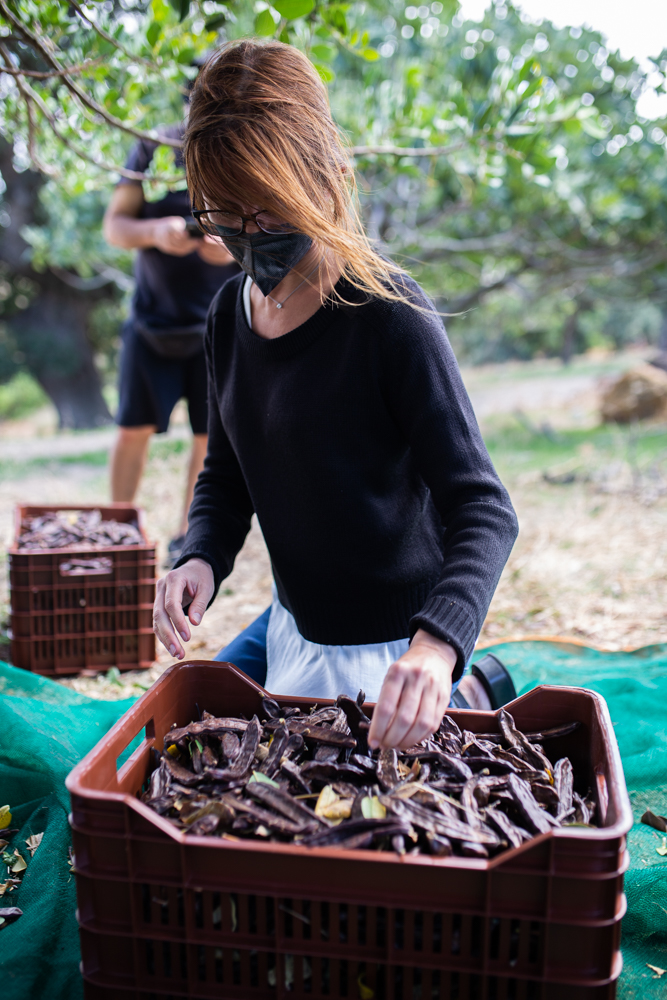Yiannis lets me in on the secrets of carob syrup as we sit beneath a flowering carob tree. It is late in the fall and the tree is full of small flowers that will grow into pods this coming year. Carob trees grow in abundance in several regions of Crete, thriving in the island’s arid expanses.
As Yiannis cracks open a pod to show me the beans inside, a piece falls to the ground. His dog, Makis, quickly scoops it up and retires to a quiet corner to chew on it. In times when Greece struggled with poverty, carob was known as “the poor man’s chocolate” and prized for its sweet and distinctive aroma.
The fruit, which matures in September, is packed with beneficial properties. Chief among these is a very high calcium content, three times that of milk. To make carob syrup, Yiannis cuts the pods and soaks them in water for several hours. He removes the beans from one and places them on a wooden table.
“If we were to weigh these, we would find each is exactly 0.2 grams,” Yiannis explains, saying that the word “carat”, used as a unit for weighing precious stones and gold, stems from carob. “And not just that,” he says as he skims the scum from a pot where the extract from the pods will continue to simmer away until only the syrup is left. “They say that Queen Cleopatra also loved carob syrup. It was the ancients’ face-lift cream!” As the sun sets behind the carob and olive trees of Sitia, I can’t help thinking that, even if this last claim isn’t true, the earthy charms of the carob are more than enough to entice you to try it as such.

Photos courtesy of Stelios Papardelas / © Kathimerini